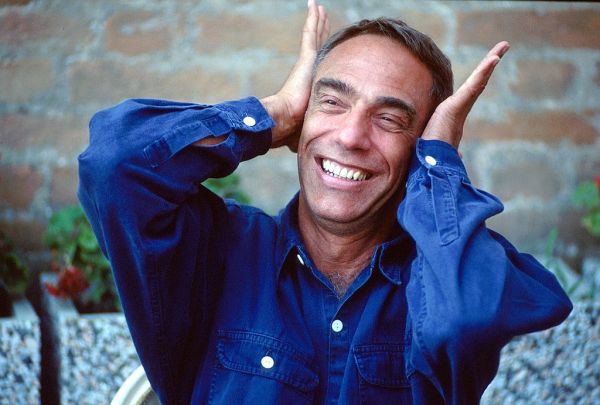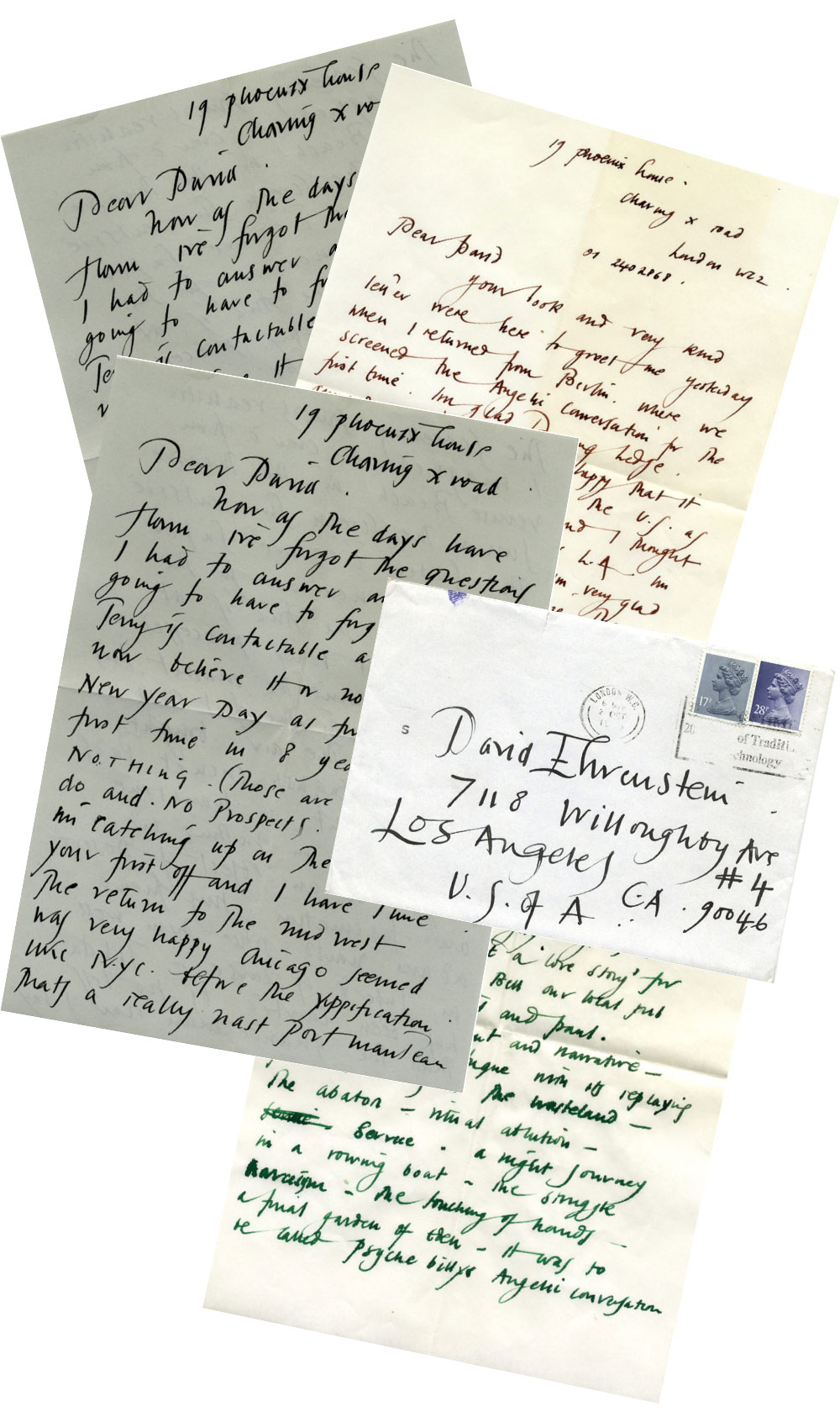
Derek Jarman – Gay British Film Maker
In celebration Gay Pride 2022, Walter Film is highlighting Derek Jarman (1942-1994), one of the preeminent gay filmmakers of the late Twentieth Century, and one of the great names in British “queer (as it was known)” cinema. From the time of his feature film, SEBASTIANE (which rendered the story of Saint Sebastian in what for its time was disturbingly overt homoerotic imagery), Jarman left an indelible imprint on the history of LGBTQ art.
ARCHIVE OF UNPUBLISHED SIGNED AUTOGRAPHED LETTERS (CA. 1985-88)
What we’re featuring is a remarkable body of unpublished, thoughtful, and revealing letters, telling us about his art and about him as a person. Jarman was an accomplished visual artist, and the calligraphy in which these letters were written is, in itself, beautiful to behold.

A Brief History
Jarman first became known as a stage designer. His break in the film industry came as production designer for Ken Russell‘s The Devils (1971). He made his mainstream narrative filmmaking debut with Sebastiane (1976), about the martyrdom of Saint Sebastian. This was one of the first British films to feature positive images of gay sexuality; its dialogue was entirely in Latin.
He followed this with Jubilee (shot 1977, released 1978), in which Queen Elizabeth I of England is seen to be transported forward in time to a desolate and brutal wasteland ruled by her twentieth-century namesake. Jubilee has been described as “Britain’s only decent punk film“, and featured punk groups and figures such as Jayne County of Wayne County & the Electric Chairs, Jordan, Toyah Willcox, and Adam and the Ants.
AIDS Activist
During the 1980s, Jarman was a leading campaigner against Clause 28, which sought to ban the “promotion” of homosexuality in schools. He also worked to raise awareness of AIDS. His artistic practice in the early 1980s reflected these commitments, especially in The Angelic Conversation (1985), a film in which the imagery is accompanied by Judi Dench‘s voice reciting Shakespeare’s sonnets.
Caravaggio
Jarman spent seven years making experimental Super 8mm films and attempting to raise money for Caravaggio. Released in 1986, Caravaggio attracted a comparatively wide audience; it is still Jarman’s most widely known work. Caravaggio also saw Jarman work with actress Tilda Swinton for the first time. Overt depictions of homosexual love, narrative ambiguity, and the live representations of Caravaggio’s most famous paintings are all prominent features in the film.
In 1989, Jarman’s film War Requiem brought Laurence Olivier out of retirement for what would be Olivier’s last screen performance. The film uses Benjamin Britten‘s eponymous anti-war requiem as its soundtrack and juxtaposes violent footage of war, with mass for the dead and the passionate humanist poetry of Wilfred Owen.
Music Videos
In addition to his film work, Jarman made a side income by directing music videos for various artists, including Marianne Faithfull, the Smiths and the Pet Shop Boys. Jarman’s work broke new ground in creating and expanding the fledgling form of ‘the pop video‘ in England, and in gay rights activism.
Jarman directed the 1989 tour of the UK duo Pet Shop Boys; and by pop concert standards this was a highly theatrical event with costume and specially shot films accompanying the individual songs. Jarman was the stage director of Sylvano Bussotti‘s opera L’Ispirazione, first staged in Florence in 1988.
HIV
On 22 December 1986, Jarman was diagnosed as HIV positive and discussed his condition in public. His illness prompted him to move to Prospect Cottage, Dungeness, in Kent. In 1994, he died of an AIDS-related illness in London, aged 52.
Homosexuality
Homosexuality was decriminalised in England and Wales in 1967, but London was an LGBT tourism destination even before then. LGBT culture became more visible during the 1970s as a result of civil rights movements. Mark W. Turner, the author of “Gay London,” stated that when Derek Jarman moved to Charing Cross in 1979, it began the process of Soho becoming the centre of the London LGBT community and that by the early 1990s this was “firmly established”.
- African American Movie Memorabilia
- African Americana
- Black History
- Celebrating Women’s HistoryI Film
- Celebrity Photographs
- Current Exhibit
- Famous Female Vocalists
- Famous Hollywood Portrait Photographers
- Featured
- Film & Movie Star Photographs
- Film Noir
- Film Scripts
- Hollywood History
- Jazz Singers & Musicians
- LGBTQ Cultural History
- LGBTQ Theater History
- Lobby Cards
- Movie Memorabilia
- Movie Posters
- New York Book Fair
- Pressbooks
- Scene Stills
- Star Power
- Vintage Original Horror Film Photographs
- Vintage Original Movie Scripts & Books
- Vintage Original Publicity Photographs
- Vintage Original Studio Photographs
- WalterFilm
